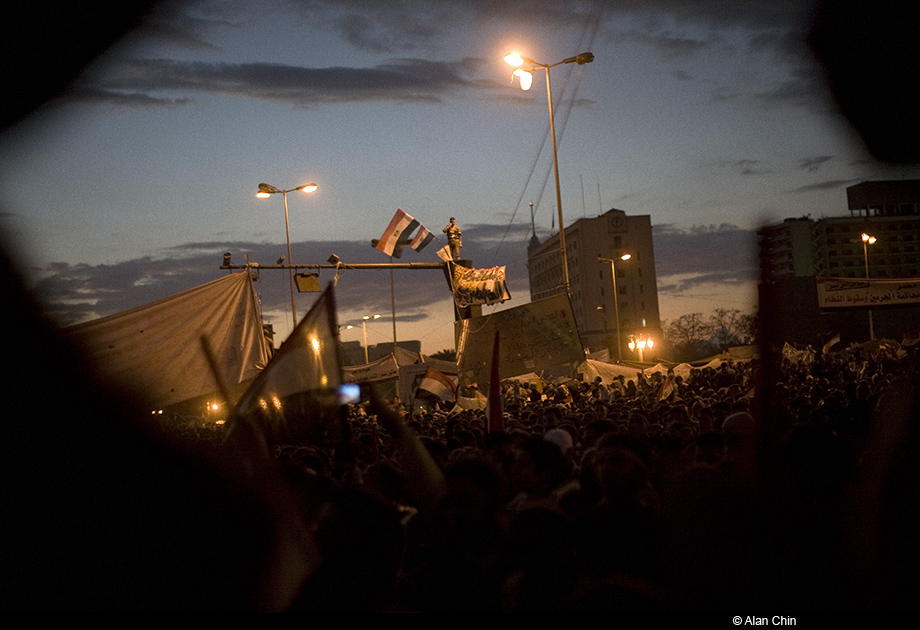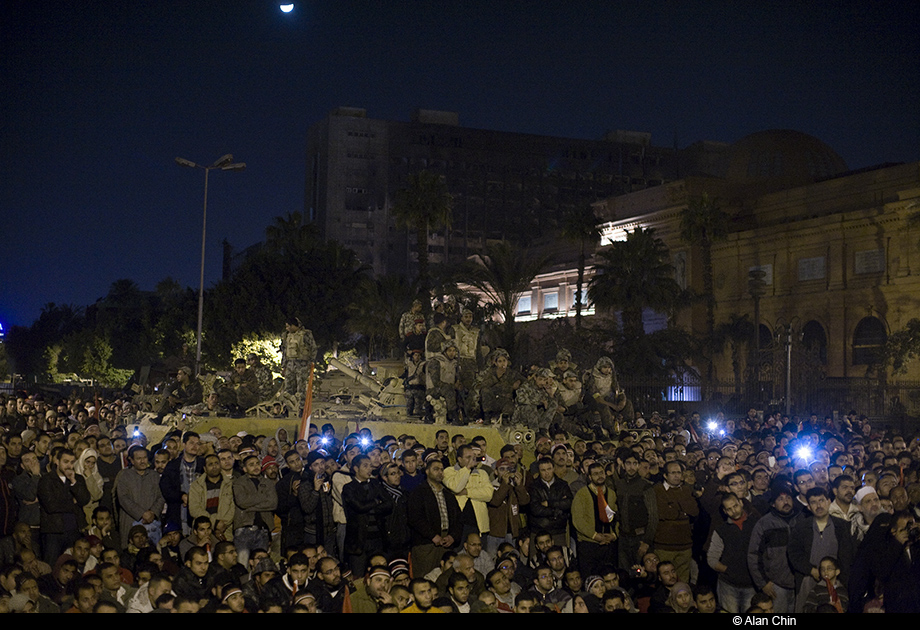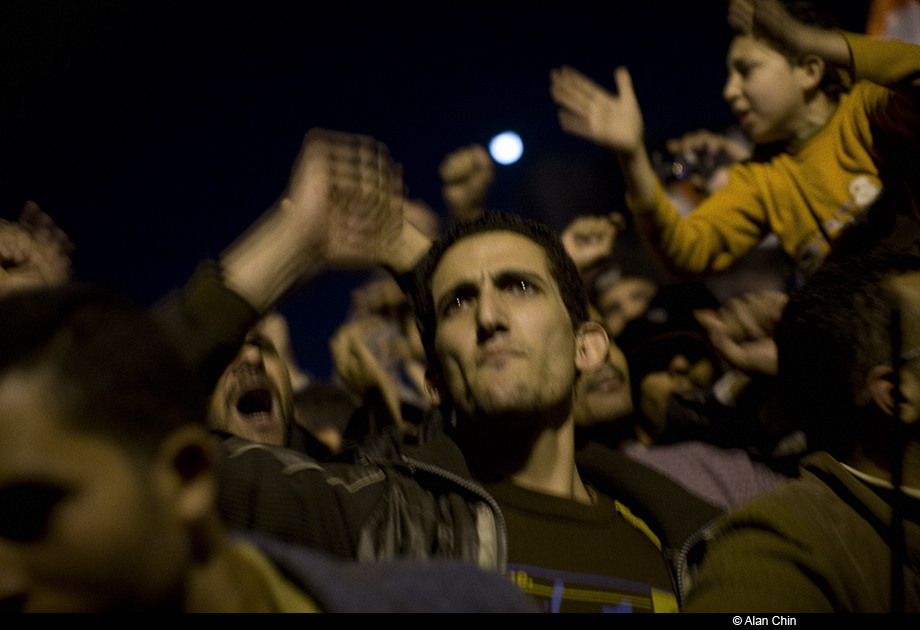Mubarak Embarrasses President Obama and Disappoints the World

The Middle East turmoil takes a new turn. This last one, where President Mubarak lead many to believe he will be resigning, then, as a token effort, announced that he is going to stay on as president, but will transfer all power to the Vice President he appointed a mere 2 weeks ago.
It is my opinion that there has been some conversation between the U.S. administration and Mubarak (or someone high in Egypt). The U.S. administration was probably lead to believe that there will be a significant yield of power. Those words made many assume that he would be resigning.
Talk about jumping the gun, that statement led President Obama to say, "... we are witnessing History unfold..." earlier this morning. Another person trying out for Dionne Warwick's job was the director of the CIA, Leon Panetta when he said, "It is assumed Hosni Mubarak will hand over power to Vice President..." Mr. Panetta, you know what happens when we "Assume".
The president and the administration are in an awkward position to say the least.The fact that this decision was announced today means Mubarak probably has the support of the armed forces behind him or he wants to commit suicide. I hope this is not to aggravate the situation to warrant using force.
In the Middle East pride runs deep. Even with millions protesting Mubarak shows that trait when he said, "No one makes the decision for me...". Was he talking to the people or president Obama? We will never know.
__________________________

Anticipating Mubarak’s speech to the Egyptian people, to the anti-government protesters, and literally, to the world, the expectation tonight — telegraphed in the most convincing way in the afternoon by the top echelon of the Egyptian military — was that the President would announce he was stepping down. Analogies to the fall of the Berlin Wall were as prominent and flowing as the flags — mostly Egyptian, but also Tunisian — billowing back and forth among the dense, giddy and this-far-from-blissful assemblage in Tahrir Square waiting and waiting to watch the speech. In the early hours, Alan sent just three pictures. In their simplicity they track the story of this profound, stunning and ultimately, crushing evening.
As Alan related to me, exhausted:
The first photo captures the massive crowd in Tahrir as it was getting dark, waiting eagerly for “the speech.”

The second photo captures the dead silence and rapt attention of not just the crowd, but the soldiers watching the speech atop their APC’s projected onto sheets-for-TV screens. In the background is the Egyptian Museum, and beyond that, the burned hulk of the ruling NDP Party headquarters.

And the third photo captures the moment the people realized Mubarak wasn’t going anywhere.
In describing the crowd reaction in that moment, Alan felt that it wasn’t anger, not in the singular way that the television commentators described it, as much as shock, a shock like a powerful body blow. I really admire this photo for all it says. Of course, there’s the fist in motion, expressing the rage one would feel upon taking such a blow, but the rage running wild through the veins of the Egyptian public right now in the early morning of what most people fear will be a frightful day. And then, there’s his face and his eyes. It’s the face of the Egyptian street right now, feeling so betrayed and abused, so deeply hurt and upset.
Ever the student of politics, too, Chin expressed the surprise and confusion of everyone over the bizarre twist of events. Said Alan:
“The degree of the shock was the result of what the army said, the Generals actually presenting themselves in the Square today. Really, if you watched their announcement on television — and you couldn’t miss it, because it was playing everywhere, over and over — it looked like something out of a 1940’s movle, these senior officers with these very serious looks. They didn’t quite say Mubarak was going to leave, so there was room to maneuver. But, as a projection of authority, it was just them. All them. There was no Mubarak and no Suleiman. So late tonight, when it was Mubarak on TV, and then Suleiman, but no generals with them, well… what the hell does that mean?
“The situation is explosive. It’s absolutely explosive. El Baradei is calling on the military to save the day, almost begging them to stage a coup. That’s what most people in the street seem to want as well. There is plenty of suspicion toward the military, but people believe it’s the best option.
“Right now, it feels like, unless the military actually does intervene, this place is going to explode. But what happened? Even Leon Panetta, the US Director of the CIA was saying he was going to resign. I’m afraid for what’s going to happen. People are marching on the TV station as we speak.”
– Michael Shaw with Alan Chin
PHOTOGRAPHS BY ALAN CHIN
>via: http://www.bagnewsnotes.com/2011/02/alan-chin-in-cairo-extreme-shock-and-rage...
__________________________
“We Are Writing History by Our Blood”: Egyptian Physician on Why Protests Won’t End Until Mubarak Resigns
GO HERE TO VIEW VIDEO REPORT
Democracy Now! senior producer Sharif Abdel Kouddous speaks to Egyptian physician Dr. Ali El Mashad in Cairo’s Tahrir Square over the weekend. Dr. Mashad describes being injured in the streets and bleeding from the head. “We are writing history by our blood,” he says. Mashad says he will not stop demonstrating until Mubarak leaves office. [includes rush transcript]
AMY GOODMAN: In Tahrir Square over the weekend, Democracy Now!’s Sharif Abdel Kouddous spoke to an Egyptian physician named Dr. Ali El Mashad who is participating in the demonstrations. He said the longer the revolution lasts, the more beautiful it becomes.
DR. ALI EL MASHAD: My name is Ali El Mashad. I’m from Cairo. I’m a doctor, physician. I see that the more delayed or the more late his decision to go away is, the more creative, more beautiful is the revolution. So, I want him to give us some more time to do or to make a more beautiful revolution, a more historical revolution, a more creative one, a more distinguished one. That’s it, just as war, because this was very ultra-violent, ultra-violent. But thank God we are here. I don’t know why, I don’t know how.
SHARIF ABDEL KOUDDOUS: Did you ever expect Egyptians to be able to do this?
DR. ALI EL MASHAD: No, not ever. And I didn’t expect we can overcome these partisan, these armies. We faced gas bombs. And I was dying. I was gasping. Eight days now.
SHARIF ABDEL KOUDDOUS: Spent the night here?
DR. ALI EL MASHAD: Yeah, yeah, yeah. I went home for three to four hours within these eight days, to take a bath, take a shower, to sleep for two hours, couple of hours. But I’m sleeping here. I’m living here. And I don’t want to go back home. My wife is coming now. She was striving to come, and I said, "Leave the kids and come." Why not?
SHARIF ABDEL KOUDDOUS: Do you think it will work?
DR. ALI EL MASHAD: Yeah, yeah, I’m sure. It is working. It is working. We have succeeded. I think after Wednesday, after the massacre of Wednesday—I was there. I was in the first line there, and I took one of the—I took an honor here, a little honor, compared to the other [inaudible], who took—I know one went to the hospital six times to get stitches, six times, and returns back to resume war. He was fighting. He was fighting like a soldier, without any training, without any organization, without any past history. I don’t know how. But I saw the people, the youth, fighting, fighting like death, 15 hours, for 15 hours. I can’t believe it.
At 3:00 a.m. Thursday, I was sure we’re down. We can’t resume. So I prayed to God. I couldn’t throw stones. I couldn’t do anything. So I stood up with the people, to die with the people, and started praying. Then, I decided to go to sleep. I couldn’t stand up.
At 5:00, I had a phone call from my wife. She said, "You’re leading. You had a victory already." I said, "How? How come?" After one-and-a-half hours of sleep. Then my colleagues came. They said, "The army, this army that they brought to us, has gone. It has gone. We are controlling the bridge." I said, "We are controlling the bridge? We are controlling the bridge?" They said, "Yeah. And also, we have three—we have three deaths." I didn’t get sad. I said, "That’s how the revolutions—that’s how the revolutions succeed, by this blood, by this blood, by these clean, clear youth, who are dying, who are dying for the country, for their rights, for their future and the future of their kids."
I told my wife on the phone, "Tell my kids, if I pass away here, tell my kids, 'Your father was a man, was a man of his word. He stood up for his rights, for your rights, and he went away for you. So, don't lose this.’" And I was sure this may happen. I’m sure, 'til now, this may happen. I am ready to it. I am trying to be ready to it. I'm trying real hard to be ready, to be ready for bullets, for fire, for the last fight. I’m ready. I’m trying, trying to be ready.
I think he’ll go, easily. I’m sure. I am sure he’ll. I think he’ll go easily. But I am putting all the odds. He may not go easily, so we’ll fight him to go hard. But he’ll go. Three days, four days, two weeks, a month, a year? He’ll go. He has been judging us, he has been stealing us, he has been fighting us 30 years ago. So, we are ready to fight him, a year, two years, here.
Everybody, every, every single drop of blood which is shed here is one of the—is one of the steps towards victory, towards freedom, towards history. We are writing history here, by the blood of our youth, by our blood. We all know that. When I felt the first drop of blood on my head, I was very happy. It was very happy. It’s my first time. It’s my first time to shed blood here. I used to do this all the time. I used to protest against all the decisions. But this was my first drop of blood. So I felt we are near. This time, we’re real near. This time, we are almost. We will never give up. We’ll never yield. He is the man who will give up. Soon he’ll go away. And I’m telling him here, go away now. Go away now, or you’ll be killed.
AMY GOODMAN: That was Dr. Ali El Mashad, an Egyptian physician participating in the demonstrations in Cairo, speaking in Tahrir Square over the weekend. Special thanks to Sharif Abdel Kouddous and Jacquie Soohen. This is Democracy Now! When we come back, we’ll be joined by Sharif Abdel Kouddous and Anjali Kamat of Democracy Now! and speak with Human Rights Watch. The numbers are going up of those who have died—over 300, it’s believed at this point. And how many thousands have been detained? We’ll speak with a researcher for Human Rights Watch in Cairo. Stay with us.
>via: http://www.democracynow.org/2011/2/9/we_are_writing_history_by_our

 KillerHipHop.com
KillerHipHop.com




 Sponsored by TNQ editor Kim Jernigan and family in celebration of the man who sparked their love of poetry, this contest is for poems written in response to an occasion, personal or public-poems of gratitude or grief, poems that celebrate or berate, poems that make of something an occasion or simply mark one. We are interested in light verse and in verse more sober, in the whole spectrum of tones and occasions. One of Nick's own poems, which we think captures the broadness of his (and our) sense of 'occasion', is pictured at left. For a bit lengthier background on the genre, you can also turn to Amanda Jernigan's funny and thoughtful essay on poems and occasions, linked below. Both originally appeared in
Sponsored by TNQ editor Kim Jernigan and family in celebration of the man who sparked their love of poetry, this contest is for poems written in response to an occasion, personal or public-poems of gratitude or grief, poems that celebrate or berate, poems that make of something an occasion or simply mark one. We are interested in light verse and in verse more sober, in the whole spectrum of tones and occasions. One of Nick's own poems, which we think captures the broadness of his (and our) sense of 'occasion', is pictured at left. For a bit lengthier background on the genre, you can also turn to Amanda Jernigan's funny and thoughtful essay on poems and occasions, linked below. Both originally appeared in 
























